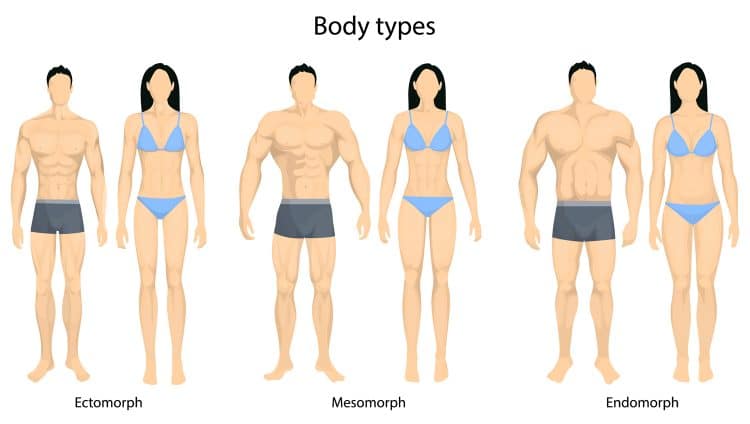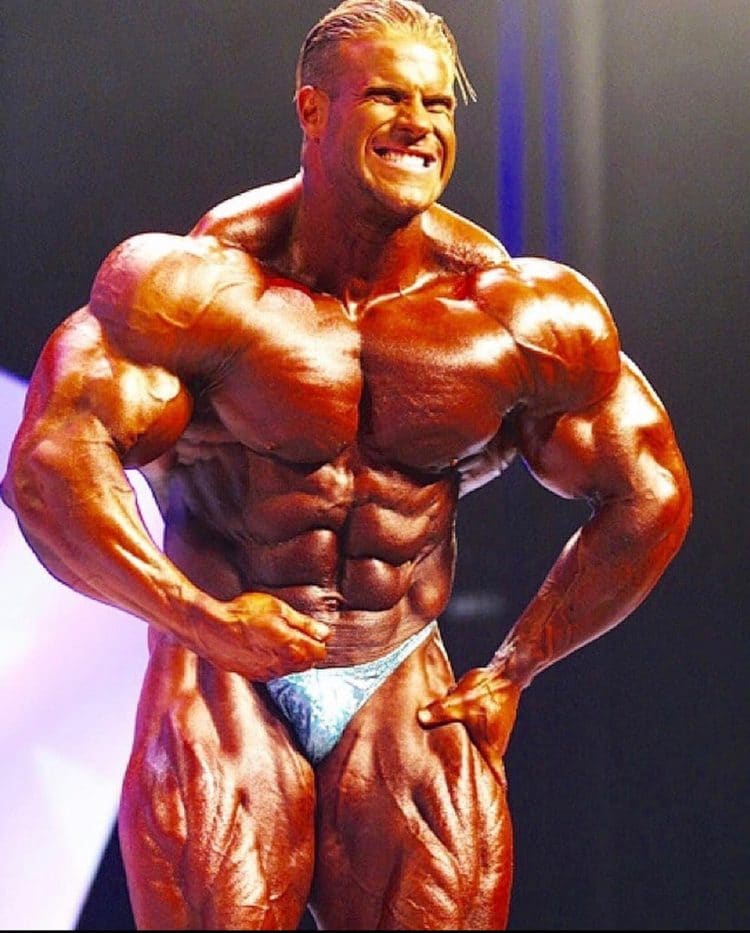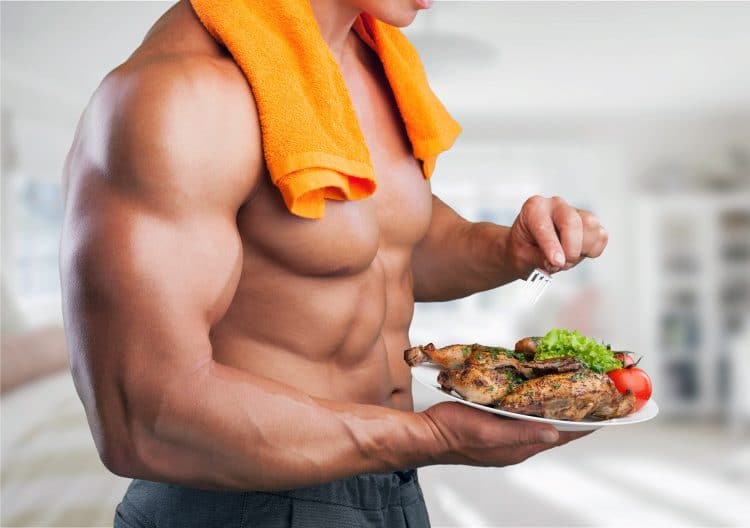Bad Chest Genetics
Most men have an emotional connection with their chest. You might have to take what we just said with a pinch of salt, but it does not make it untrue.
Think about it for a second. The push-up is one of the first exercises an individual learns to perform. And when you enter the gym, you head to the barbell bench press. Also, a broad chest is associated with masculinity and strength. There is a reason why Superman, Batman, and The Hulk all have a barrel chest. Do you know who does not have a broad chest? Spiderman. While it does not make him any less of a superhero, Spidey does not come to mind when someone mentions macho comic book heroes.
Besides improving your physique’s aesthetics and making you look virile, a wide chest can help boost your confidence. On the flip side, weak pecs can hammer your self-image.
However, contrary to what most gym bros will have you believe, a poor training program and lack of drive are not the only things holding back your pec gains. As much as we hate to say it, like most other muscle groups, genetics plays a big role in the development of your pecs.
While some people have won the genetic lottery and have shredded inner pecs and full pectoral muscle bellies, others cannot get their chest to respond to their training and diet, no matter how hard they try.
In this article, we decipher the role of genetics in building a barrel chest, how genetics affect your muscle mass, and ways to fix it.
Must Read: Top 5 Bodybuilders With The Best Genetics Ever
Now before we get into the nitty gritty of bad chest genetics and how to fix them, let’s address the elephant in the room — pectoral injuries and medical conditions.
If you are a WWE fan, you’ve probably seen Kofi Kingston and Scott Steiner perform and wondered what is up with their chests. Both wrestling superstars have disfigured pectoral muscles, but there are different reasons behind their conditions.
Kingston’s sunken chest is the result of unusual chest genetics that take away from his upper body aesthetics. His pecs are connected closer to the sides of his sternum (the partially T-shaped vertical bone that forms the anterior portion of the chest wall centrally) instead of the usual center position.
However, Steiner’s disfigured chest is due to an injury. While wrestling in 2007, a co-performer struck him in the throat and injured his trachea. Big Poppa Pump underwent surgery to fix the issue, where some complications forced the doctors to cut through his chest in order to rectify his breathing. The wrestling superstar’s condition is known as muscular atrophy and involves the partial or complete degeneration of a given muscle or muscle group.
Pectus carinatum, also known as pigeon chest, is a popular (but uncommon) chest wall deformity where there is an overgrowth of the cartilage between the ribs and the sternum (breastbone), causing the middle of the chest to stick out. Notably, ninety percent of pectus carinatum cases are diagnosed after children turn 11 years old.
An individual cannot alter their bone structure. It does not matter how hard you train or diet; you cannot color outside the lines.
If you have a small rib cage, you might not be able to build a broad chest as most other guys. Furthermore, chest genetics determine the insertion points of your pecs, another variable that cannot be modified through training.
To sum it up, depending on your condition, you might be able to work around your pectoral injuries or genetic predispositions. Consider consulting a qualified physical practitioner if you’re dealing with a setback or want an expert opinion on your physique.
Must Read: Gyno in Bodybuilding: The Ultimate Guide
Body type and structure are the most overlooked aspects when people assess their weaknesses and draw up a plan to fix them.
Here are the three body types and their impending chest structures:
Individuals in the mesomorph and endomorph categories have a head start in the chest development department. However, ectomorphs can bring up their pecs with the right training, diet, and recovery program.
Are you confused about your body type? Take our small body type quiz to determine which category you fall within. (It takes less than a minute.)
Hardgainers can have a tuff time gaining muscle mass. If you’re not stuck on a plateau, it is time you take a step back and reassess your approach.
If you lack size, you should be on a calorie surplus, meaning you should eat more calories in a day than you expend. Furthermore, follow a training program that helps you achieve muscular hypertrophy.
Check Out: Bodybuilding Tips for Hardgainers
Learning about your chest muscle fibers is the last step in determining if you have bad chest genetics.
Each muscle contains three types of fibers that play different roles and can be activated using different stimulations. The three types of muscle fibers are slow oxidative (SO), fast oxidative (FO), and fast glycolytic (FG).
Skeletal muscle fibers can be classified based on two criteria: First, how fast fibers contract relative to others. Second, how the fibers regenerate ATP. [1]
Different muscles have different functions and comprise a unique mix of fiber types. For your pectoral muscles, the average ratio is about 60 percent of type 1 muscle fibers and 40 percent of type 2 muscle fibers. Notably, the structure can fluctuate between five to ten percent for different people.
If you are training for power — or fixing your bad chest genetics — you need to do more power, high-intensity, and strength workouts and fewer endurance workouts to maximize type 2 A muscle fibers.
Related: Average Chest Size For Men & How to Measure Your Chest
Follow these steps to build a superhero chest:
If you’re unhappy with your chest’s shape and size, chances are you have hit a plateau. Increasing your training frequency and volume is one of the best ways of breaking through the overhead ceiling.
Do not shy away from training your chest up to thrice a week. Remember, you don’t have to perform four to five exercises in each chest workout. Your goal here is to stimulate the lagging muscle frequently throughout the week without overtraining them. You could perform a couple of cable exercises at the end of a workout to achieve the objective.
Furthermore, on your dedicated chest training day, shock your pecs by performing north of 20 sets in the workout. Plus, cycle through the rep ranges to keep your muscles guessing.
Must Read: Jay Cutler Volume Training: Do More Volume Training For Huge Gains
Most people fail to build their chests as they let their egos get the better of them. For building muscle mass, you need to ensure maximum muscle fiber recruitment. Lifting heavy and going through the motions for the sake of it isn’t going to help your cause.
Use a weight you can lift with the perfect form and hit muscle failure around 10-15 reps. Pause and contract your muscles at the top of every rep. Practice posing and squeezing your muscles between sets to maximize blood flow to the target muscles.
Additionally, the upper chest is a stubborn muscle group that is also a weakness for most lifters. Bringing up lagging muscles can improve the overall aesthetics of your chest.
Your goal should be to leave each chest workout with a nasty pec-ripping pump. Do not wrap up your training session until your pecs are gorging with blood and lactic acid.
Check Out: How to Get A Skin-Splitting Muscle Pump
Sometimes lifters cannot hit the target muscle optimally because they lack mobility or have an incorrect posture due to stiff muscles or joints. If you think you have bad chest genetics, you should add at least 15 minutes of stretching at the beginning of your training regimen.
You should add soft tissue work and posture correction drills to your routine. And, if you have trouble loosening up, you should go for deep tissue massages every week until you notice an improvement in your posture.
Check Out: Mobility Training for Bodybuilders, Powerlifters, and Weightlifters
If you have a lean frame and are not satisfied with the shape of your pecs, you should switch to a bulking program. Adding size can also help improve your striations when you shred later.
Bulking will also increase your strength, aiding in lifting heavier and for longer. Use our convenient online calorie calculator to determine an optimal daily caloric goal for yourself.
If you’ve tried everything mentioned in this article, but nothing seems to be working for you, you might have hit a plateau. In such a situation, it is best to take some time off training and allow your muscles time to rest and recuperate. A four-week break should be enough to get you back on track.
To maximize your pec development, maintain a balance between fly and pressing movements and compound and isolation lifts. Many lifters leave gains on the table by switching between exercises too often.
You should perform a workout routine for at least two to four weeks to get the best bang for your buck. Furthermore, try as many exercise variations as possible, find what works best for you, and stick with it.
Although these tips won’t alter your DNA, they might significantly change your training, diet, and recovery program, helping you break through a plateau and make the most of what you have.
You shouldn’t throw in the towel and quit working your chest if it hasn’t been responding to your training and diet program. Instead, switch up your training regimen until you find what works.
A broad and thick chest can make you stand out — think Arnold Schwarzengger’s side chest pose. While the tips mentioned in this article might not get you Arnie’s pecs, they’ll surely put you on the right path.
Vidur is a writer and editor at FitnessVolt.com. He is passionate about all things strength sports and dedicated to sharing his hard-earned knowledge. An expert at giving unsolicited advice, his writings benefit the readers and infuriate the bros.
Vitaliy Ugolnikov, popularly known as “Good Vito,” has emerged as one of the most impressive young talents in the NPC….
Martin Fitzwater is seeking redemption after placing second to Andrew Jacked at the 2022 Texas Pro show last month. In…
Hadi Choopan has developed a reputation for being one of the most consistent Men’s Open bodybuilders in the IFBB Pro…
Michal Krizo is one of bodybuilding’s most talked about names despite having yet to earn his Pro card in the…
Bodybuilding coach Dennis James is highly confident in Mamdouh ‘Big Ramy’ Elssbiay as he eyes his third Sandow trophy at…
Your email address will not be published. Required fields are marked *
document.getElementById( “ak_js_1” ).setAttribute( “value”, ( new Date() ).getTime() );
At FitnessVolt.com Our mission is to help our readers to achieve their fitness goals, regardless of where you’re at on your journey, we are on a mission to educate You with the latest from strength and fitness space. Read more.
Email: sm(at)fitnessvolt.com
Disclosure: FitnessVolt.com has an affiliate relationship with different brands and is a participant in the Amazon Services LLC Associates Program. However, our reviews are based on well research backed analysis.
Follow Us
© Copyright 2010 – 2022 Fitness Volt IBC. All Rights Reserved.
© Copyright 2010 – 2022 Fitness Volt IBC. All Rights Reserved.